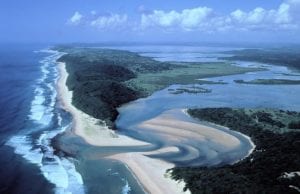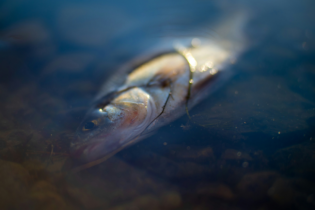Two of South Africa’s largest lakes – Sibaya and St Lucia – are being drained by a combination of drought and the growing water demands of the timber industry and local people. This is the warning from scientists attending the recent national Groundwater Conference in Durban.They say the surface level of Lake Sibaya, the country’s largest freshwater lake, has dropped by at least 4m over the last decade and is now at risk of being polluted by sea water.
Meanwhile, the groundwater table on the western shores of Lake St Lucia is dropping by almost a metre every year, largely due to water-guzzling gum trees. St Lucia is the largest estuarine lake system in the country, with a mixture of fresh and salty water. Jannie Weitz and Molla Demlie of the University of KwaZulu-Natal told the conference there was a direct underground link between Lake Sibaya, local groundwater and the sea.Sibaya, which forms part of the iSimangaliso World Heritage Park, is about 60km south of the KwaZulu-Natal/Mozambique border.The steady drop in water levels at Sibaya has now sparked fears that water from the Indian Ocean could seep in under the coastal dunes to transform Sibaya’s valuable fresh water and the local borehole supplies into salty water.The recent increase in the rate of water abstraction from the lake, combined with decreasing rainfall and rapidly increasing pine tree plantations may result in a decrease in lake level which would have dramatic negative effects on the neighbouring ecosystem and a potential seawater invasion of the coastal aquifer.For many decades, the lake level at Sibaya had been relatively constant, but over the last few years there has been a dramatic increase in human settlement and other development outside the boundaries of the wetland park.
This included new pine plantations and rapid growth in the neighbouring towns of Mbazwana and Mseleni, leading to a depletion of Sibaya and local groundwater boreholes. Right now, Weitz and Demlie said there seemed to be a “fine balance” between the lake and groundwater flow, but any further development was likely to cause “severe influences on the local ecosystems.”







